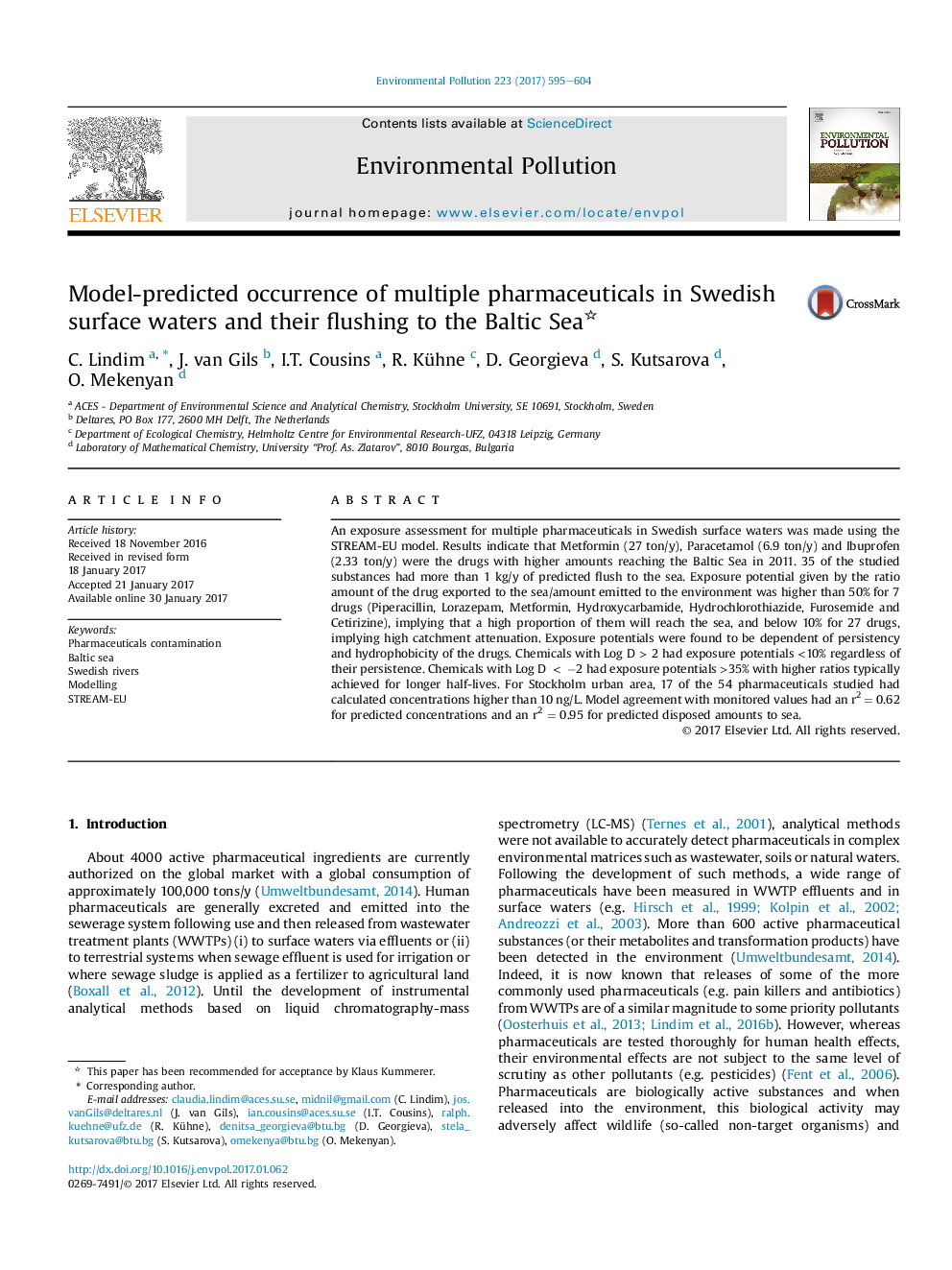| Article ID | Journal | Published Year | Pages | File Type |
|---|---|---|---|---|
| 5749340 | Environmental Pollution | 2017 | 10 Pages |
â¢An exposure assessment for pharmaceuticals in water was done with STREAM-EU model.â¢35 drugs had predicted flushes to the sea higher that 1 kg/y.â¢In Stockholm 25 drugs had predicted concentrations >1 ng/L with 17 drugs >10 ng/L.â¢Persistence + hydrophobicity determined long-range transport and exposure potential.
An exposure assessment for multiple pharmaceuticals in Swedish surface waters was made using the STREAM-EU model. Results indicate that Metformin (27 ton/y), Paracetamol (6.9 ton/y) and Ibuprofen (2.33 ton/y) were the drugs with higher amounts reaching the Baltic Sea in 2011. 35 of the studied substances had more than 1Â kg/y of predicted flush to the sea. Exposure potential given by the ratio amount of the drug exported to the sea/amount emitted to the environment was higher than 50% for 7 drugs (Piperacillin, Lorazepam, Metformin, Hydroxycarbamide, Hydrochlorothiazide, Furosemide and Cetirizine), implying that a high proportion of them will reach the sea, and below 10% for 27 drugs, implying high catchment attenuation. Exposure potentials were found to be dependent of persistency and hydrophobicity of the drugs. Chemicals with Log DÂ >Â 2 had exposure potentials <10% regardless of their persistence. Chemicals with Log DÂ Â <Â Â â2 had exposure potentials >35% with higher ratios typically achieved for longer half-lives. For Stockholm urban area, 17 of the 54 pharmaceuticals studied had calculated concentrations higher than 10Â ng/L. Model agreement with monitored values had an r2Â =Â 0.62 for predicted concentrations and an r2Â =Â 0.95 for predicted disposed amounts to sea.
Graphical abstractDownload high-res image (259KB)Download full-size image
